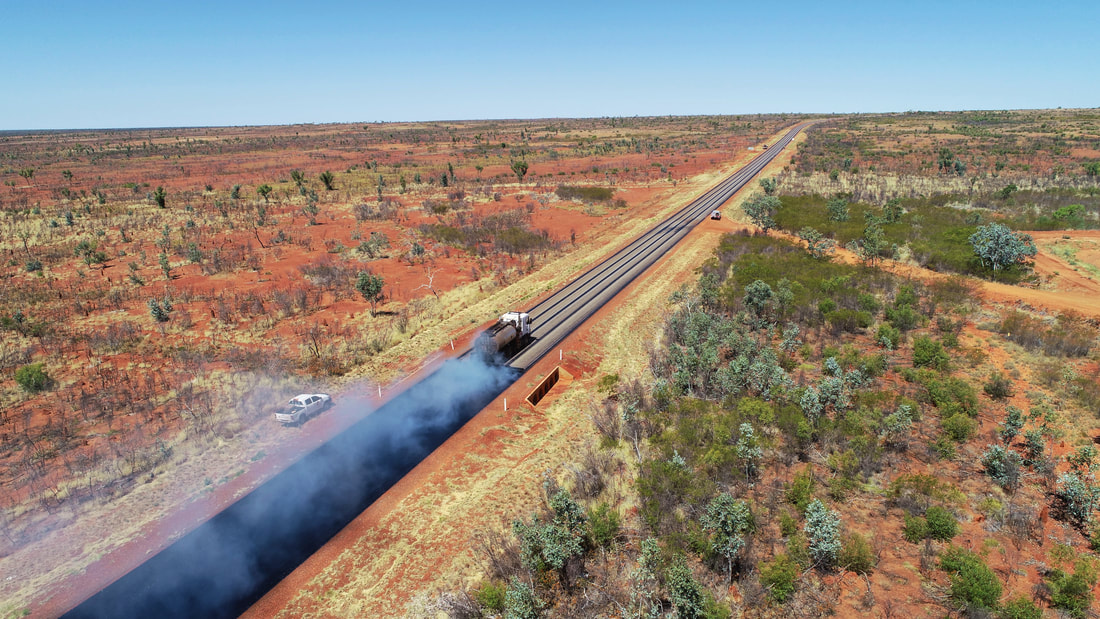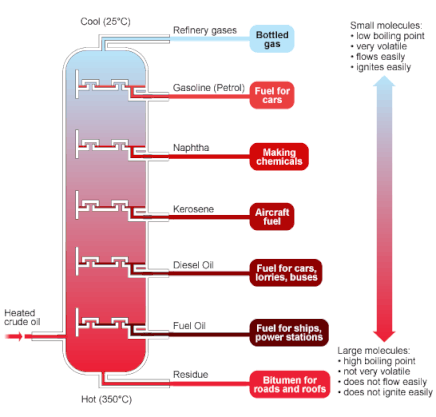Our Services
From the very largest to the smallest contracts in the Territory, NT Bitumen does it all. From Darwin to Alice Springs, we service every square inch of the NT. Please have a look below at our gallery and at our list of services to find out the processes behind the construction.
Our Materials
|
What is Bitumen?
Bitumen is a sticky, highly viscous liquid, and is a by-product of crude oil. It is separated in the same fractional distillation columns as gas, petrol, kerosene and diesel, but because its boiling point is so high (over 500°C), after the heating process is over, everything at the bottom of the column is collected and refined into usable bitumen. Depending on the grade of bitumen and what has been added to it, it can be sprayed in liquid form between temperatures of 150 - 200°C. What is Asphalt? Asphalt is a combination of a binder, aggregates and filler. This basically means bitumen is mixed up with stones and different combinations of sands and gravel to achieve a workable solid structure. The average temperature of asphalt after production is |
between 150-180°C, and it is paved to a certain depth, normally between 30-60mm, with an asphalt paver. Asphalt is stronger than a bitumen sprayed seal, and if the base is strong underneath, the life expectancy of the pavement can stretch for many years. |
What we do..
Bitumen Sprayed Sealing
|
This is the most common method of sealing a road, car park, driveway or airstrip in the NT. It can be done on either a newly constructed base, or over the top of an existing road or pavement as a 'reseal'.
Primer-seal The most cost-effective method of sealing a pavement. Kerosene is mixed with the bitumen and then sprayed onto a compacted base, followed by a layer of stone. This is the ideal treatment for temporary car parks or detours. Prime With a newly constructed base, it is necessary to spray a primer onto the gravel (except with primer-seals). This 50/50 blend of kerosene and bitumen has a low viscosity and so it can penetrate the pavement. The kerosene evaporates, leaving residual bitumen on the surface which promotes the bond (helps it stick!) between the base and the bitumen that is placed on top. Seal After priming and waiting for the 72-hour curing period, a layer of bitumen can be sprayed onto the pavement after it has been swept clean of any loose or foreign objects. As soon as possible, a spreader truck will spread aggregate (stone chips) onto the bitumen, which will then be aligned by a roller. The common choices of stone size for this work in the NT is 7mm, 10mm and 14mm. |
Reseal
This is the same process as with the seal above, except that the bitumen is sprayed over an existing bitumen surface. Two-Coat Seal The strongest spray seal product we offer. Done as a seal or a reseal, it involves spraying a layer of bitumen, followed by placing a larger-sized stone on the ground. This will then be rolled and swept. A second layer of bitumen is sprayed on top, followed by a second layer of smaller stone. It is recommended that the size of the stone on top be at least half the size of the stone on the bottom. Common two-coat seals in the NT consist of 14/7mm aggregates. |
Video: The Reseal Process
Please find a video below explaining the reseal process. The video features NT Bitumen & Asphalt working on a large reseal contract in the central region of the Northern Territory. Be careful of the volume, the machinery can be loud!
Asphalt Paving
As with bitumen, asphalt can be placed on top of a primed pavement, or it can be placed over the top of an existing sealed pavement. Old asphalt can also be profiled off the road and replaced by the new stuff. It is used on heavily trafficked roads, while its durability ensures its use for roundabouts and intersections or generally where there is a lot of turning traffic.
The asphalt is paved with an asphalt paver to a certain depth, as in the photo above, while afterwards it is smoothed out by a double steel drum roller. It is then compacted by a multi-tyre roller. Although more expensive than bitumen, it is often the preferred choice for private driveways as it is more aesthetically pleasing to the eye. The smooth finish makes it suitable for basketball or tennis courts.
Asphalt is also used to patch pot holes and trenches. It has a makeup consisting of air voids, allowing it to expand under heat, and so it does not crack, whereas if a pot hole was repaired with cement, it would begin to crack before too long.
The asphalt is paved with an asphalt paver to a certain depth, as in the photo above, while afterwards it is smoothed out by a double steel drum roller. It is then compacted by a multi-tyre roller. Although more expensive than bitumen, it is often the preferred choice for private driveways as it is more aesthetically pleasing to the eye. The smooth finish makes it suitable for basketball or tennis courts.
Asphalt is also used to patch pot holes and trenches. It has a makeup consisting of air voids, allowing it to expand under heat, and so it does not crack, whereas if a pot hole was repaired with cement, it would begin to crack before too long.
















